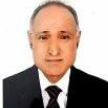International Journal of Wireless and Microwave Technologies (IJWMT)
IJWMT Vol. 15, No. 5, 8 Oct. 2025
Cover page and Table of Contents: PDF (size: 555KB)
Beamforming and Modulation Optimization for Active and Passive Reconfigurable Surfaces in 6G THz UMMIMO Networks: A Comparative Study
PDF (555KB), PP.47-56
Views: 0 Downloads: 0
Author(s)
Index Terms
6G, THz, Beamforming, Modulation, RIS, SNR, Computational Complexity
Abstract
The aim of this research is to comparatively evaluate and optimize the performance of active and passive Reconfigurable Intelligent Surfaces (RIS) in Terahertz (THz) Ultra Massive MIMO(UM-MIMO) systems for 6G Wireless Communication. The Primary objective is to analyze the impact of beamforming and adaptive modulation schemes on system capacity, computational complexity and power consumption. The study employs MATLAB based simulations under realistic wireless channel models including Rician fading channel and free space path loss to model the propagation behavior at THz Frequencies. Both active and passive RIS configuration are assessed using hybrid beamforming and multi antenna transmission techniques. Simulation results demonstrate that active RIS improves system capacity compared to passive RIS. Particularly at higher SNR level, while incurring more power consumption. Conversely, passive RIS offers better energy efficiency and lower complexity, making it suitable for low-power scenarios. These findings highlight critical design trade-offs and support the development of hybrid RIS assisted UM-MIMO architectures for efficient and scalable 6G THz communication systems.
Cite This Paper
Md. Mizanul Hoque, A. H. M. Asadul Huq, "Beamforming and Modulation Optimization for Active and Passive Reconfigurable Surfaces in 6G THz UMMIMO Networks: A Comparative Study", International Journal of Wireless and Microwave Technologies(IJWMT), Vol.15, No.5, pp. 47-56, 2025. DOI:10.5815/ijwmt.2025.05.04
Reference
[1]Theodore S Rappaport, Yunchou Xing, Ojas Kanhere, Shihao Ju, Arjuna Madanayake, Soumyajit Mandal, Ahmed Alkhateeb, and Georgios C Trichopoulos. Wireless communications and applications above 100 ghz: Opportunities and challenges for 6g and beyond. IEEE access, 7:78729–78757, 2019.
[2]Mohamed A ElMossallamy, Hongliang Zhang, Lingyang Song, Karim G Seddik, Zhu Han, and Geoffrey Ye Li. Reconfigurable intelligent surfaces for wireless communications: Principles, challenges, and opportunities. IEEE Transactions on Cognitive Communications and Networking, 6(3):990–1002, 2020.
[3]Qingqing Wu and Rui Zhang. Towards smart and reconfigurable environment: Intelligent reflecting surface aided wireless network. IEEE communications magazine, 58(1):106–112, 2019.
[4]Ertugrul Basar, Marco Di Renzo, Julien De Rosny, Merouane Debbah, Mohamed-Slim Alouini, and Rui Zhang. Wireless communications through reconfigurable intelligent surfaces. IEEE access, 7:116753–116773, 2019.
[5]Zhi Chen, Boyu Ning, Chong Han, Zhongbao Tian, and Shaoqian Li. Intelligent reflecting surface assisted terahertz communications toward 6g. IEEE Wireless Communications, 28(6):110–117, 2021.
[6]Marco Di Renzo, Merouane Debbah, Dinh-Thuy Phan-Huy, Alessio Zappone, Mohamed-Slim Alouini, Chau Yuen, Vincenzo Sciancalepore, George C Alexandropoulos, Jakob Hoydis, Haris Gacanin, et al. Smart radio environments empowered by reconfigurable ai meta-surfaces: An idea whose time has come. EURASIP Journal on Wireless Communications and Networking, 2019(1):1–20, 2019.
[7]Saber Hassouna, Muhammad Ali Jamshed, James Rains, Jalil ur Rehman Kazim, Masood Ur Rehman, Mohammad Abualhayja, Lina Mohjazi, Tei Jun Cui, Muhammad Ali Imran, and Qammer H Abbasi. A survey on reconfigurable intelligent surfaces: Wireless communication perspective. IET Communications, 17(5):497–537, 2023.
[8]Zhi Chen, Xinying Ma, Chong Han, and Qiye Wen. Towards intelligent reflecting surface empowered 6g terahertz communications: A survey. China Communications, 18(5):93–119, 2021.
[9]Emil Bjo¨rnson, O¨ zgecan O¨ zdogan, and Erik G Larsson. Intelligent reflecting surface versus decode-and-forward: How large surfaces are needed to beat relaying? IEEE Wireless Communications Letters, 9(2):244–248, 2019.
[10]Chongwen Huang, George C Alexandropoulos, Chau Yuen, and Me´rouane Debbah. Indoor signal focusing with deep learning designed reconfigurable intelligent surfaces. In 2019 IEEE 20th international workshop on signal processing advances in wireless communications (SPAWC), pages 1–5. IEEE, 2019.
[11]Deepak Mishra and Ha˚kan Johansson. Channel estimation and low-complexity beamforming design for passive intelligent surface assisted miso wireless energy transfer. In ICASSP 2019-2019 IEEE International Conference on Acoustics, Speech and Signal Processing (ICASSP), pages 4659–4663. IEEE, 2019.
[12]Chongwen Huang, Alessio Zappone, Me´rouane Debbah, and Chau Yuen. Achievable rate maximization by passive intelligent mirrors. In 2018 IEEE International Conference on Acoustics, Speech and Signal Processing (ICASSP), pages 3714–3718. IEEE, 2018.
[13]Shuowen Zhang and Rui Zhang. Capacity characterization for intelligent reflecting surface aided mimo communi- cation. IEEE Journal on Selected Areas in Communications, 38(8):1823–1838, 2020.
[14]Wankai Tang, Ming Zheng Chen, Jun Yan Dai, Yong Zeng, Xinsheng Zhao, Shi Jin, Qiang Cheng, and Tie Jun Cui. Wireless communications with programmable metasurface: New paradigms, opportunities, and challenges on transceiver design. IEEE Wireless Communications, 27(2):180–187, 2020.
[15]Chang Liu, Xuemeng Liu, Derrick Wing Kwan Ng, and Jinhong Yuan. Deep residual learning for channel estimation in intelligent reflecting surface-assisted multi-user communications. IEEE Transactions on Wireless Communica- tions, 21(2):898–912, 2021.
[16]Miguel Dajer, Zhengxiang Ma, Leonard Piazzi, Narayan Prasad, Xiao-Feng Qi, Baoling Sheen, Jin Yang, and Gu- osen Yue. Reconfigurable intelligent surface: Design the channel–a new opportunity for future wireless networks. Digital Communications and Networks, 8(2):87–104, 2022.
[17]H.M. Abidur Rahman, Foyjul Hasan, Md. Mizanul Hoque, Md. Mizanur Rahman, and Md. Waliur Rahman. Mc- cdma system for multi-user using walsh code on rayleigh fading channel. In 2021 5th International Conference on Electrical Engineering and Information Communication Technology (ICEEICT), pages 1–5, 2021.
[18]Zhiguo Ding, Lu Lv, Fang Fang, Octavia A Dobre, George K Karagiannidis, Naofal Al-Dhahir, Robert Schober, and H Vincent Poor. A state-of-the-art survey on reconfigurable intelligent surface-assisted non-orthogonal multiple access networks. Proceedings of the IEEE, 110(9):1358–1379, 2022.
[19]Md. Mizanul Hoque, Sadman Al Farabe, Md. Masud Karim, Md.Hachhibur Rahman, Md. Azad Hossain, and A.H.M. Asadul Huq. Optimal equalizer selection for ummimo hybrid beamformation at 6g thz wireless communi- cation. In 2024 3rd International Conference on Advancement in Electrical and Electronic Engineering (ICAEEE), pages 1–4, 2024.
[20]Song Noh, Junse Lee, Gilwon Lee, Kyungsik Seo, Youngchul Sung, and Heejung Yu. Channel estimation tech- niques for ris-assisted communication: Millimeter-wave and sub-thz systems. IEEE Vehicular Technology Magazine, 17(2):64–73, 2022.
[21]Shu Sun and Hangsong Yan. Channel estimation for reconfigurable intelligent surface-assisted wireless communi- cations considering doppler effect. IEEE Wireless Communications Letters, 10(4):790–794, 2020.
[22]Jiao Wu, Seungnyun Kim, and Byonghyo Shim. Parametric sparse channel estimation for ris-assisted terahertz systems. IEEE Transactions on Communications, 71(9):5503–5518, 2023.
[23]Wencai Yan, Wanming Hao, Chongwen Huang, Gangcan Sun, Osamu Muta, Haris Gacanin, and Chau Yuen. Beam- forming analysis and design for wideband thz reconfigurable intelligent surface communications. IEEE Journal on Selected Areas in Communications, 41(8):2306–2320, 2023.
[24]Chu Hongyun, Pan Xue, and Li Baijiang. Channel estimation for reconfigurable intelligent surface aided multiuser millimeter-wave/thz systems. China Communications, 21(3):91–103, 2024.
[25]Li Wei, Chongwen Huang, George C Alexandropoulos, Ahmet M Elbir, Zhaohui Yang, Zhaoyang Zhang, Marco Di Renzo, Me´rouane Debbah, and Chau Yuen. Wireless communications empowered by reconfigurable intelligent surfaces: Model-based vs model-free channel estimation. Journal of Information and Intelligence, 1(3):253–266, 2023.
[26]Samarendra Nath Sur and Rabindranath Bera. Intelligent reflecting surface assisted mimo communication system: A review. Physical Communication, 47:101386, 2021.
[27]Boyu Ning, Zhi Chen, Wenjie Chen, and Jun Fang. Beamforming optimization for intelligent reflecting surface assisted mimo: A sum-path-gain maximization approach. IEEE Wireless Communications Letters, 9(7):1105–1109, 2020.
[28]Yitao Han, Shuowen Zhang, Lingjie Duan, and Rui Zhang. Double-irs aided mimo communication under los chan- nels: Capacity maximization and scaling. IEEE Transactions on Communications, 70(4):2820–2837, 2022.
[29]Beixiong Zheng, Changsheng You, Weidong Mei, and Rui Zhang. A survey on channel estimation and practical passive beamforming design for intelligent reflecting surface aided wireless communications. IEEE Communications Surveys & Tutorials, 24(2):1035–1071, 2022.
[30]Manzoor Ahmed, Salman Raza, Aized Amin Soofi, Feroz Khan, Wali Ullah Khan, Syed Zain Ul Abideen, Fang Xu, and Zhu Han. Active reconfigurable intelligent surfaces: Expanding the frontiers of wireless communication-a survey. IEEE Communications Surveys & Tutorials, 2024.
[31]S Nandan and M Abdul Rahiman. Intelligent reflecting surface (irs) assisted mmwave wireless communication systems: A survey. J. Commun., 17(9):745–760, 2022.

